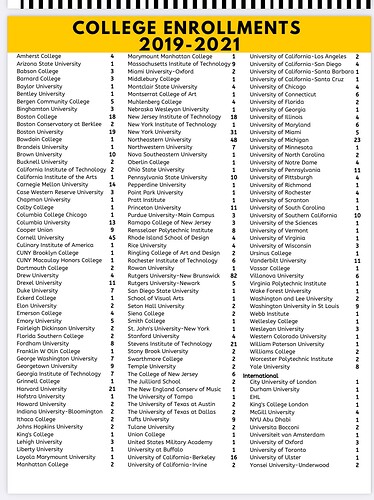What do you consider “top colleges”? So my kid’s great and very large high school in Chicagoland sends almost nobody to the Ivies, but then again, almost nobody applies. However, there are always a few who go to U Chicago, students who go to WUSTL, a few to Northwestern, USC, UCLA, OOS to U Mich, UVA, and UNC, one or two to Stanford and/or Caltech, a couple always go to Tulane, and Midwestern LACs like Carleton, and maybe a few NE LACs like Vassar (Wesleyan seems to like the high school).
Since no more than 20 generally apply to any Ivy but Harvard (which may get 30 applications), with RD acceptance rates of 3%-5%, it’s not surprising that there are almost no kids from the high school attending Ivies.
On the other hand, there are always a good number applying to Northwestern, U Chicago, WUSTL, and other Midwestern colleges with low acceptance rates, and there are always students who are accepted to these colleges, sometimes with scholarships.
I don’t know about the class of 2026, but that has held true for the previous decade or so. I would REALLY be surprised if there were no students from my kid’s high school who were accepted at the usual list of colleges this year.
It is, however, hard to know - only the students with perfect GPAs have their chosen colleges announced. Students with 3.95 UW will not join the ranks of the “valedictorian group”, but have the same chances of being accepted to an “elite” college. However, the high school made a decision a few years back that it would not publish the lists of the numbers of kids who are accepted to each college. It’s part of the policy of not having a toxic college admissions season. Congratulations on your admission to Yale, but that, in and of itself, is not more noteworthy than the the acceptance of students to UIUC, Purdue, Kent State, or UIC.
Bottom line, I have not seen any evidence that our kid’s public school has been “shut out”.
There are high schools in the area which are higher ranked, and they have better numbers of students who are accepted to “elite” colleges.
Again, their stated mission is education at the highest level, not “teaching the highest achieving students”. They are trying to achieve the very best teaching practices, which is not the same as exclusively (or even preferentially) teaching the highest achieving students.
Be that as it may, I specifically referred to PRIVATE “elite” colleges, and Oxbridge are not private. The mission of public universities is generally based on the needs of the state (or in the case of Oxbridge, the country), not the interests and needs of the university. Often the needs of the state include the retention of high achieving students.
However, not always - Berkeley can fill its incoming classes with applicants whose weighted GOA is over 4.2, but they reject 70% of the students with those GPAs, and 40% of their admits are of students with lower GPAs, albeit at a much lower acceptance rate. Still, there were 22,000 or so applicants to Berkeley with weighted GPAs of over 4.2 in 2020 who were rejected, while around 5,500 students who were accepted had lower GPAs than those 22,000.


